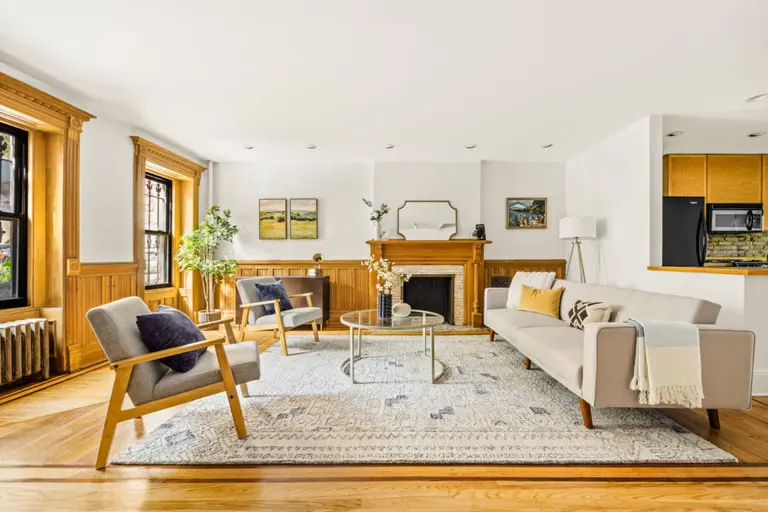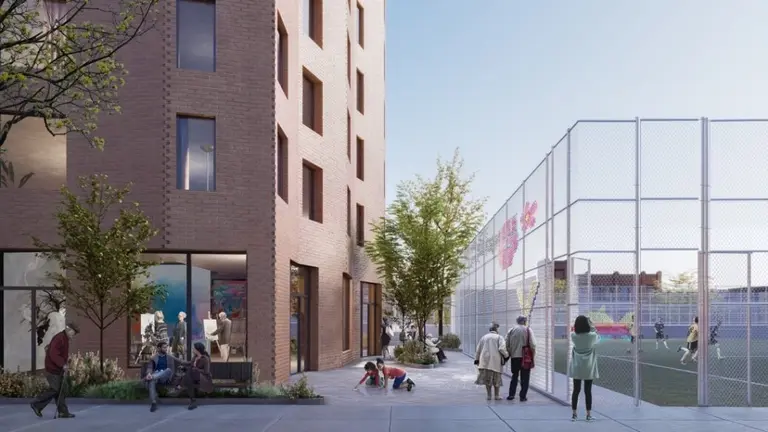Six things you didn’t know about the Prospect Heights Apartment House District

Photo courtesy of the Prospect Heights Neighborhood Development Council
This post is part of a series by the Historic Districts Council, exploring the groups selected for their Six to Celebrate program, New York’s only targeted citywide list of preservation priorities.
Constructed on a lost fragment of the original footprint of Prospect Park, the Prospect Heights Apartment House District is a concentration of 82 apartment buildings dating from 1909-1929. This development was promoted by the Prospect Park Commissioners to attract high-quality construction to complement the nearby Park, Brooklyn Museum, Brooklyn Botanic Garden and Brooklyn Public Library. The buildings, representative of a period in Brooklyn history when building patterns shifted to accommodate a rising middle class, remain exemplary for their architectural integrity and as housing stock for a diverse population.
As one of this year’s Six to Celebrate recipients, the Prospect Heights Neighborhood Development Council and the Cultural Row Block Association on Eastern Parkway are working to garner local support and submit a proposal for historic district status from the LPC.
 Map via Prospect Park Alliance
Map via Prospect Park Alliance
1. It was originally supposed to be part of Prospect Park.
The former farmland on which the Prospect Heights Apartment House District is situated was mapped into the initial design for Prospect Park by the landscape architect Edgar Viele in 1861. Viele was also a captain in the Engineer Corps of the Seventh New York Regiment, and when the Civil War broke out later that year, he was called into action. With Viele gone, the Parks Commission in 1865 turned to Calvert Vaux and Frederick Law Olmsted, who removed the “East Side Lands” from the plan and added more area to the south and west, so that the new park would not be bisected by Flatbush Avenue.
2. It was built on land acquired through eminent domain.
The controversial Atlantic Yards project is not the first residential development in Prospect Heights to be built on land assembled through the use of eminent domain. The Parks Commission condemned the land – owned by local farmers – on which Viele’s park was to be built. After the park design was changed, the Commission divided the land into lots and offered it for sale to developers. During the mid to late 1890s, rowhouses were built in the northern part of the East Side Lands, west of Vanderbilt Avenue on Prospect Place, Park Place, Underhill Avenue and Sterling Place in what is now the Prospect Heights Historic District. The southern portion of the land, between the current Eastern Parkway and St. Johns Place, was developed beginning around 1910 after legal proceedings compensated the former landowners. By this time, rowhouses were no longer the preferred type of new development in the neighborhood, and the lots were developed with apartment houses.
 163 Eastern Parkway courtesy of the Prospect Heights Neighborhood Development Council
163 Eastern Parkway courtesy of the Prospect Heights Neighborhood Development Council
3. It was Brooklyn’s first “transit-oriented development.”
The development of the Prospect Heights Apartment House District was to a large extent driven by the announcement in 1903 of plans to bring subway service to Eastern Parkway. Not only would the subway make it easy for thousands of New Yorkers to visit the new Brooklyn Museum and Brooklyn Botanic Garden, but it made the as-yet-undeveloped area north of Eastern Parkway a natural location for higher-density residential buildings.
 4. Its apartment houses were specifically marketed to lure affluent tenants from Manhattan.
4. Its apartment houses were specifically marketed to lure affluent tenants from Manhattan.
Nearly a hundred years before the 2004 rezoning in downtown Brooklyn paved the way for high-rise apartment buildings along Flatbush Avenue, developers were busy devising how to offer Manhattan-like apartment living in Brooklyn. The Turner Towers building at 135 Eastern Parkway was marketed as “Park Avenue Apartments on Eastern Parkway.” Ads for the Copley Plaza at 41 Eastern Parkway read, “New York has its luxurious Park Avenue apartments—Brooklyn has its Copley Plaza.” Developers also touted the convenience to the new subway, advertising a twelve-minute commute to Wall Street, and a twenty-minute commute to Times Square, in order to attract affluent tenants who were professionals in finance, media, advertising and other growing industries.
5. It receives more than a million visits each year.
Because of its location next to Brooklyn’s premier cultural institutions, more than a million visitors take in the view of the Prospect Heights Apartment House District’s grand early 20th-century residences each year, making it one of the most popular public destinations in Brooklyn. Its buildings were specifically designed to complement and reflect the style and grandeur of the surrounding institutions and monuments, forming a cohesive whole welcoming both New Yorkers and tourists into the heart of Brooklyn.
 A Google Street View of the Green Point Savings Bank from 2014, before its demolition
A Google Street View of the Green Point Savings Bank from 2014, before its demolition
6. Most of its apartment houses are significantly underbuilt and face development pressure.
Unfortunately, a superheated real estate market threatens the preservation of many of the buildings in the Prospect Heights Apartment House District. Most of the lots in the district are underbuilt relative to allowable density under their current zoning by at least 25 percent, and in many cases by 50 percent or more. In 2016, the historic Green Point Savings Bank at 856 Washington Avenue was lost to redevelopment. Over the last year, apartment buildings in the district have been marketed in part on the basis of their excess development rights. The Prospect Heights Neighborhood Development Council and the Cultural Row Block Association on Eastern Parkway are exploring the opportunity to gain Historic District designation from the New York City Landmarks Preservation Commission in order to stem the tide of uncharacteristic alterations and insensitive development of the former East Side Park Lands.
About these Six to Celebrate groups:
The Prospect Heights Neighborhood Development Council assesses and represents the needs and concerns of the Prospect Heights community in terms of housing, economic development, physical environment, safety and security, and social services.
The Cultural Row Block Association on Eastern Parkway works as a collective power with local officials and politicians to protect the quality of life long-term on the blocks between Plaza Street East and Washington Avenue along Eastern Parkway in Brooklyn.
+++

This post comes from the Historic Districts Council. Founded in 1970 as a coalition of community groups from the city’s designated historic districts, HDC has grown to become one of the foremost citywide voices for historic preservation. Serving a network of over 500 neighborhood-based community groups in all five boroughs, HDC strives to protect, preserve and enhance New York City’s historic buildings and neighborhoods through ongoing advocacy, community development, and education programs.
Now in its eighth year, Six to Celebrate is New York’s only citywide list of preservation priorities. The purpose of the program is to provide strategic resources to neighborhood groups at a critical moment to reach their preservation goals. The six selected groups receive HDC’s hands-on help on all aspects of their efforts over the course of the year and continued support in the years to come. Learn more about this year’s groups, the Six to Celebrate app, and related events here >>
































